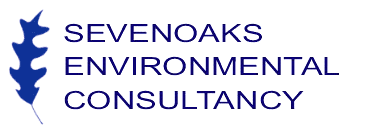 Add My Company
Add My Company
Sign In

The Risk Assessment essentially forms the core of the contaminated land investigation and assessment process. Potential risks identified from the findings of the Desk Study and Site Investigation are based on the existence of linkages between the sources, pathways and receptors identified. The significance of these risks must be addressed.
Essentially, the process aims to determine what risk, if any, is posed by the presence of contaminants through determining if there are pathways through which the contaminants may impact sensitive receptors, and if the risk is acceptable or not based on the proposed development.
In relation to contaminated land, there are three essential elements to any risk assessment and these are;
•SOURCE (Contaminant) – a substance which is located in, on or under the land and has the potential to cause harm to human, health, water resources including controlled waters or the wider environment;
•PATHWAY – the means or route by which a source of contamination can migrate to be affected by an identified source; and,
•RECEPTOR – something which could come to harm from a contaminant and includes for example human health, water resources, surface water courses and linkages and the wider environment.
Each of these elements can exist independently however when linkages are identified between them a potential risk is posed. The linked combination of “contaminant-pathway-receptor” is known as a pollutant linkage.
Phase 1 Desk Studies and Phase 2 Site Investigations are used to identify potential sources, pathways and receptors. Each pollutant linkage needs to be considered separately, understood and dealt with by appropriate recommendations.
However, without a pollutant linkage, there is not a risk, even if a contaminant is present. Where there is a pollutant linkage, and therefore some degree of risk, it is important to identify what the level of risk posed is.
The question of whether risk is acceptable in any particular case requires scientific and technical assessment of the circumstances on the site and the use of appropriate criteria to judge the level of risk combined with professional judgement.
In some cases it is possible to use contaminant fate and transport modelling through complex risk assessment models to determine the level of risk present.
Commonly the Contaminated Land Exposure Assessment (CLEA) model is used to make an assessment about the fate and transport of chemicals in the environment. The CLEA model assists in the assessment of the risks posed to human health from chronic exposure to soil contamination in relation to land use. Using this assessment tool the risks can be derived using generic or site specific assumptions on the characteristics and behaviour of contaminants, pathways and receptors.
The nature and level of risk is defined by variability in the condition and circumstances of any particular piece of land. The details of the use of the land itself, as well as the surrounding land, determine whether particular receptors and pathways are present and, if they are, the extent to which they might potentially be affected by contamination. The same concentration of contaminant can have widely differing implications in different circumstances. Risk Assessment allows this to be considered in a structured and pro-active way so that appropriate and cost-effective decisions are taken.
For more information on Risk Assessment talk to Sevenoaks Env Consultancy Limited
Enquire Now
List your company on FindTheNeedle.

